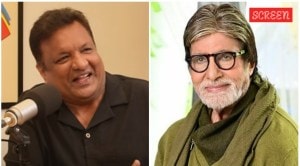Praise be the Leader
This Nitish Kumar biography details the early years rather well but desists from interrogating the CM
Arun Sinha begins this biography with an admission of doubt. When the idea of the book came to him a few years into Bihar Chief Minister Nitish Kumars first term,Sinha wondered whether his objectivity would be compromised by his closeness to his subject. The author was Nitishs classmate in college and remains a very intimate friend. Sinha didnt let doubt hold him back. On balance,he should have.
This is a book that should have been written,and by Sinha,but after a far more serious wrestling with the problem he identifies. It also required a stepping back of another kind,for reasons that Sinha doesnt quite acknowledge in the narrative,explicitly or otherwise.
Nitish raj and the rise of Bihar are unfolding projects. In an argumentative democracy,despite Nitishs healthy mandate and the gushing press he has largely received,these are,they must be seen to be,contested projects. Especially in the second part of his book,where the focus is on Nitish-in-government,Sinhas viewfinder rarely seeks a vantage point that is outside of the corridors of Patnas media-savvy ruling regime,and is much less sceptical of its claims.
All the big achievements of Nitish raj,from cycle yojana for school-going girls,later extended to boys,to road-building and the construction of Bihari pride,are listed in arduous detail. All the absences and grey areas,like the promised land reform that didnt happen or the oh-so-qualified thug-cleansing in Nitishs own party and government,are mentioned only to be dismissed. As Sinha writes on Page 33: they (the people) saw him (Nitish) as an imperfect leader and his governance as imperfect governance But they also knew no one can be perfect.
It is in the books first half,in which Sinha tells the story of the man before he became CM and where the writing seems less constrained by its self-appointed task of plotting the rise of Bihar,that the narrative really comes alive.
There is detail and anecdote about the quiet boy who flew no kites and who registered the snub to his father by the Congress party,which twice denied him a ticket. The boy who,the book suggests,carries anti-Congressism less as principle and more as wound. The aspiring lawmaker who belonged to a backward caste like Lalu Prasad,but unlike him,to a family that did not confront the harsher edges of the zamindari system. The young socialist who spoke of revolution without personal bitterness. The Lohia-ite who gravitated to JP,along the way learning to temper class with caste and vice versa. He wouldnt be hostile to Kurmi partisans but he wouldnt be one of them, writes Sinha,of the student election strategist who,while in college,moved to the centre of two circles,of socialist students and of backward castes,deftly balancing and manipulating the demands of both.
During Karpoori Thakurs chief ministership in the late 70s,Nitish was to present a document on reservation that drew little notice at the time from the powers-that-be,but carried intimations perhaps of the future leaders tightrope walk on the vexed questions of equity and justice in Bihar. Nitish suggested exclusion of the economically better-off sections among the backwards,inclusion of poorer sections of the upper castes and a constitutional guarantee of employment for all.
Some of the most engaging parts of the book deal with the early companionship and subsequent rivalry between Lalu and Nitish the former the undisputed,flamboyant leader for whose election Nitish would canvass in college,only to overtake and eventually unseat him from Patnas most powerful address.
As Sinha tells the story of those early years,at times,incredibly,speaking from a place inside Nitishs head,he plots it against the changing landscape of the state,heaving with movements of backward class and caste assertion,especially since the 1960s. He tracks the setting in of disillusion with the Congress strategy of cooption among the backward classes,and their increasing search for a voice of their own. He outlines the takeover by the Yadavs of most of the spaces opened up by this assertion,be it in the Triveni Sangh of the 1930s or in Lok Dal of the 1980s.
There are fleeting glimpses of Manju Kumari,Nitishs wife,who,we are told,urged him to stay on in the fray when he had almost decided to renounce electoral politics in the early 1980s. Though they lived together only briefly,Nitish was in constant touch with her till she died in 2007. If only Sinha,as a friend of the family,had drawn her out on Nitish.
But there is a larger regret. In times when Indias politics has shifted to its states,a story of contemporary Bihar that captures its changing mosaic of caste,class and community is yet to be written. A biography of a politician that has a view on the individual and a perspective on his state is still harder to come by. Something in the way Sinha stitches together the first half of this biography suggests that he could have written that book.
Photos



- 01
- 02
- 03
- 04
- 05




























